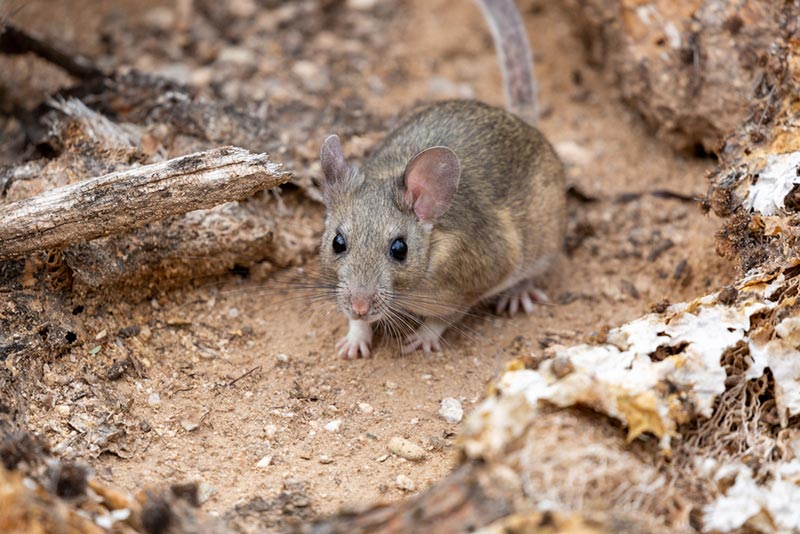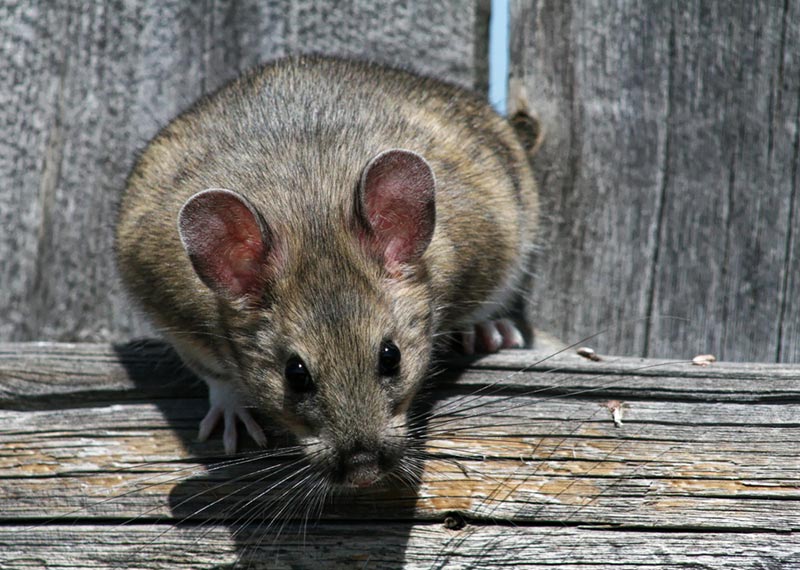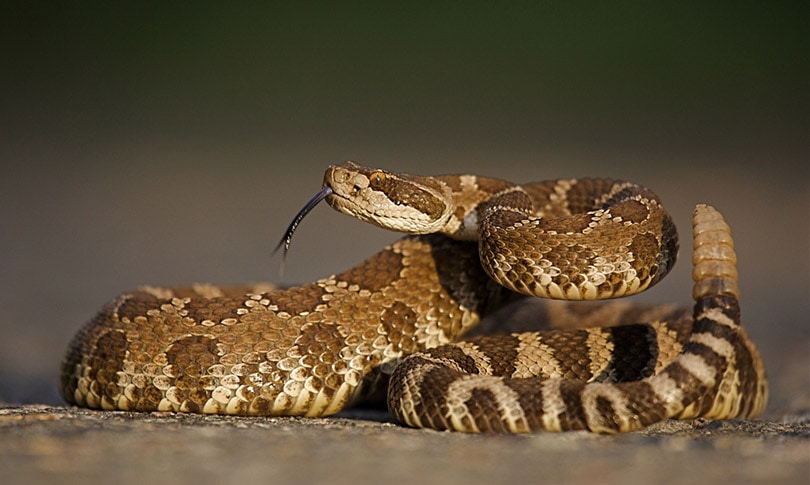Rats in Oregon: Types, Facts & Tips for Homeowners
-

- Last updated:

Rats scurrying across the floor can send anyone into panic mode. They are the last thing you’d want to see in your home, considering that almost everyone thinks they are associated with being dirty. But despite our effort to keep our homes and gardens clean, rats still appear out of thin air, sometimes embarrassing us in front of guests.
What makes them quite dreaded again is the destruction they cause to clothes, food, and other property. They bite into items while also spreading dangerous pests and diseases that affect humans, pets, and livestock. That’s why controlling them should be your top priority.
This article will focus on the types of rats in Oregon, facts about their damage, and tips to help you control them in your home and garden. Let’s get to it!
Types of Rats in Oregon
Most times, rats operate like ghosts. We don’t always see them, but we find shreds of evidence of their presence. Or, more precisely, we find torn pieces of clothes. And yet, it’s hard to control them effectively when we don’t know all that much about them.
If you live in Oregon, we’ve got you covered.
- Norway Rats
- Roof rats
- Woodrats
- Marsh rats
These types of rats are a steady problem in Oregon at large but are more common towards the western end of the state. While distinguishing them can prove hard for most homeowners, we break down the most spectacular differences below to help you identify them.

Characteristics of Norway Rats
Also known as brown, wharf, or common rats, Norway rats are common in Oregon and often confused with muskrats. Whereas muskrats can weigh between 2–4 pounds, the average weight of giant Norway rats does not exceed 1 pound. This is despite having a “heavier” build than other rat types.
These rats are brown with a gray underside and scattered black hairs, but more significant is the size of their eyes and ears—they are smaller than other rats. Typically, they live in large hierarchical groups in sewers, burrows, and sometimes in cellars. But since they are better swimmers than climbers, it’s common to find them in sewers and other ground basements. In gardens, they burrow along riverbanks and beneath woodpiles or garbage.
Characteristics of Roof Rats
As Norway rats are known for their large size, roof rats are known for being smaller commensal rats. Some people call them black rats or ship rats, but roof rats stick with them more because they like sheltering on the roofs.
They are popular destructors in buildings. Besides gnawing through building materials, they are mostly known for contaminating food in stores and granaries worldwide. They are long and thin (6–8 inches) with bulging eyes and ears. Their noses are pointed while their tails are scaly and longer than their bodies (7–10 inches).
Overall, roof rats have soft, brown fur with spots of black dotting across their upper body. Their underparts can either be black, white, or gray.
In terms of weight, roof rats are among the lightest types of rats, commonly weighing between 5–9 ounces. Larger ones can grow up to 12 ounces.
Characteristics of Woodrats
If you constantly find your jewels missing, you probably have a woodrat infestation in your home. These rats are well known for stealing shiny objects to build their nests.
Woodrats are better described by their characteristic behavior of accumulating food and debris near their nests, including sticks, bones, manure, and jewelry. This behavior has even branded them another name: packrats.
Physically, their bushy tails and large protruding eyes and ears make them easily distinguishable. They also have long and thick but soft fur that varies in color according to species, from gray to reddish brown. Their underbody color varies from white to rusty brown as well.
Woodrats usually measure between 10–18.5 inches and weigh between 9.5–14 ounces, meaning they are heavier than roof rats but not as many as Norway rats.
Characteristics of Marsh Rats
Marsh rats resemble the common brown rats, except their sizes are medium, and their fur is thick and short. The upper parts often have the same color as their ears, commonly ranging from gray to grayish brown.
On the other hand, their feet and underbelly are off-white, whereas the tails are dark brown on the upper and paler below. They measure 8.9–12 inches and weigh 1.4–2.8 ounces.
They are popularly known for being active at night, meaning they can rarely be found. However, you’ll find their grass and sedge nests beneath the debris, in short burrows, and near shrubs around your home. Being good swimmers, they seek safety in water when alarmed. So, before launching an attack on them, ensure there’s no pool around.
Why We Don’t Want Rats Around Our Homes
Without a doubt, rats are troublesome animals, no matter their species. Some of the damages they cause to us include the following:
Nest Building
As long as they can gnaw through them, rats will destroy any material they come across in your home, intending to provide shelter for themselves and their babies. They chew on everything, including wood, paper, books, cloth, and metals.
Rat Fires
With constantly growing teeth, rats always desire to sharpen them by chewing on metals and electrical wires. How many times have they chewed on your power cables or HDMI cords? Whatever number of times, you can only be thankful because they didn’t do their worst.
It’s no new thing for rats to cause electrical fires. All it takes them to start an electrical wire is to chew the insulation until the exposed or naked wires carrying hot currents become a fire threat. An electrical fire becomes imminent when it comes into contact with water or other cables.
Rats can also shock themselves to death while munching on live wires, therefore causing a nasty smell when the carcasses start decaying.
Food Damage and Contamination
Rats invite themselves into your home not just to live but feed as well. What’s saddening is that they live on their terms, not yours. Although a few grams can be enough for them daily, rats always contaminate ten times more food by leaving their droppings and nipples on them.
They eat partial pieces but leave the remaining food unfit for human and pet consumption. Packaged foods even come as a double bonus for rats. They use the packaging for nesting and destroy the food after feasting on it. How selfish of them!
Moreover, they will forage on your crops in the field and damage them before they are mature enough to be harvested.
Fluids and Wastes
After consuming your food, the rats will need to excrete waste. If only they could do it outside! But they release their urine and feces around their nests, resulting in a horrible odor. Over time, the chemicals contained in the excretions may damage the walls and floors and cost a lot to repair.
Pests and Diseases
It’s common knowledge that mice and rats carry harmful viruses and bacteria that could cause dangerous respiratory ailments. The Centers for Disease Control and Prevention estimates that, directly or indirectly, they can spread over 35 diseases, including Hantavirus, Lassa fever, monkeypox, West Nile virus, and rat-bite fever. Such diseases are spread through feces, urine, and bites. We also get infected by handling them directly or by eating contaminated food.
Woodrats and Marsh rats are great performers when it comes to spreading pests. They carry ticks and fleas, which often get attracted to dogs, cats, and other home animals, consequently causing other serious health problems.
They Invite Snakes
Snakes naturally feed on rats. While there are 15 native snake species in Oregon, it’s not surprising to find them in a rat-infested home. They hide in grass and under piles of debris, tactfully preying on the rodents.
We can all agree that snakes are scarier than rats, and nobody wants them near their home. Can you imagine coming across one right inside your house? No thanks!

Signs of Rat Infestation
If you suspect rats have invaded your home but aren’t sure, you can look for the following signs for confirmation.
- Squeaking sounds, especially during the night.
- Damaged wire insulators
- Evidence of droppings
- Scurrying sounds
- Presence of rat nests
- Dirt smudges
- Chewed walls
Tips for Keeping Rats Away From Your Home
The following tips will help you get rid of rats in your home and garden:
1. Rodent-Proof Your Home
When we talk about rodent-proofing your home, we mean removing all the necessary conditions that make rat and mouse infestation probable.
- Cleaning Up – Because rats love to hide in debris, bushes, and other untidy environments, the first step towards a rat-free home should be eliminating such hiding places. Tidy up the clutter and remove all objects that are near the wall. Ensure you dispose of food remains in closed bins while also preventing sewer pipes from leaking.
- Sealing All Gaps – Rats need a small gap to get into your house. That’s why you need to seal cracks into which two fingers can fit. Go around your walls and seal all gaps with cement, wire wool, or metal kick plates in the interior and exterior. If you can’t find any holes and yet there are rats, you should contact a professional pest management company to help you.
- Trapping Them – Even after cleaning up and sealing all gaps, it’s still essential to set rat traps where necessary. Install sticky baits or snap tracks in several corners of your homestead where rats may likely enter. For instance, you should place one near the waste bin and another in the sewer. You can use peanut butter and unsalted seeds as bait.
2. Remove Existing Rats
Rats are famous for their reproduction rate. According to Rentokil, they reach sexual maturity just 5 weeks after birth, and each female rat can birth six litters in a year. While each litter may consist of up to 12 rat pups, you can estimate how many rats will live in your house after one year. You won’t like the math.
So, you must contact your local pest management unit to analyze the situation and provide the ultimate solution for their control.
3. Use Natural Deterrent Control Methods
Cultural rat control practices can go a long way in getting rid of rats.
- Spread cloves, peppermint oil, black pepper, or cayenne pepper around your homestead. Rats and mice are allergic to them, therefore serving as practical control tools. One important thing to note, though, is that you must apply them generously at the exterior base of your house building.
- Sprinkle pepper or apply pepper spray near rat holes. Perhaps this is the most annoying thing for rats because the pepper will irritate their muzzles, discouraging them from coming anywhere near your house. They will barely even get out of those holes alive.
In Conclusion
As much as we hate them, rats will always be uninvited guests in our homes. The most consistent types in Oregon are Roof, Norway, Wood, and Marsh rats. You can eliminate them from your home by removing all existent rats, rodent-proofing your home, and using practical natural approaches like applying pepper spray in rat holes.
See Also: Rats in New Jersey: Types, Facts, and Tips for Homeowners
- The Breeding Rate of Rats
- https://www.cleggs.com/rodents/do-rats-attract-snakes/
- https://smithspestmanagement.com/blog/post/how-to-get-rid-of-rats-in-your-home/
- https://smithspestmanagement.com/blog/post/how-to-get-rid-of-rats-in-your-home/
- https://myodfw.com/wildlife-viewing/species/rats-and-mice
- https://en.wikipedia.org/wiki/Brown_rat
Featured Image Credit: Charles T. Peden, Shutterstock
Contents


